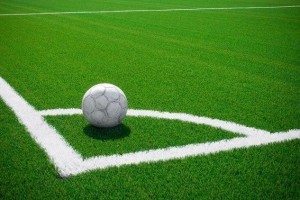
According to documents posted by Public Employees for Environmental Responsibility, the Consumer Product Safety Commission (CPSC) recently decided not to enforce toxic lead limits required by law regarding artificial turf. This is shocking, particularly in light of recent safety concerns regarding the carcinogenic threats posed by the material.
What Is Artificial Turf?
What is artificial turf made of exactly? The first artificial turf—as invented by Monsanto in 1964—was mostly composed of synthetic grass on top of concrete. After complaints that it was difficult to land on, “crumb rubber” was invented in the early 2000s, made from pulverized car tires and poured between fake grass blades, making the field bouncier and helping to prevent injuries from hitting concrete. Artificial turf grass has been hailed as a success because it diverts tires from being disposed of in landfills and does not require lawns to be watered.
It’s Everywhere
Look around and you will see artificial turf everywhere—schoolyards, professional athletic complexes, etc. According to the Synthetic Turf Council, more than 11,000 synthetic sports field are in use in the U.S. The product is also used in children’s playgrounds. Children and athletes notoriously have to come into close contact with them when they play; particularly soccer goalkeepers, who are usually constantly making dives and in doing so, sending tire pellets into the air, which then gets into their lungs.
Soccer Goalies & Cancer
Concerns have been on the rise, ever since young soccer goalies started suspiciously being diagnosed with non-Hodgkin lymphoma. Specifically, one soccer coach compiled a list of 38 American soccer players (34 of them goalies) who have been diagnosed with cancer across the nation in the last 10 or so years, most of them suffering from blood cancers such as lymphoma and leukemia.
Lack of Studies
Although the proper scientific studies have not been done in the last six years, the patterns are disturbing enough to truly wonder about this product, particularly since turfs are made of old tires, which can include benzene, carbon black mercury, lead, polycyclic aromatic hydrocarbons, arsenic, and other chemicals.
How can we know if it has not been properly tested recently? The last time that the Environmental Protection Agency (EPA) and the Consumer Product Safety Commission did studies was prior to 2009, and these agencies have admitted that the studies were limited. While the EPA says that more studies need to be done, they’ve also abandoned responsibility by calling it a “state and local decision,” which brings us to CPSC’s recent announcement.
Legal Representation in Toxic and Chemical Exposure
There is a strong link between pollution and cancer. When one agency sets limits on particularly carcinogenic chemicals, if those limits aren’t enforced, children and the general public can face serious risks. Exposure to toxic chemicals from artificial turf installation can cause numerous illnesses and forms of cancer.
The attorneys of Harrell & Nowak have spent years litigating against environmental hazards. If you have become ill because of toxic chemical exposure, contact the lawyers at our New Orleans firm (also serving Metairie, Kenner, and nearby communities) for a free consultation.
